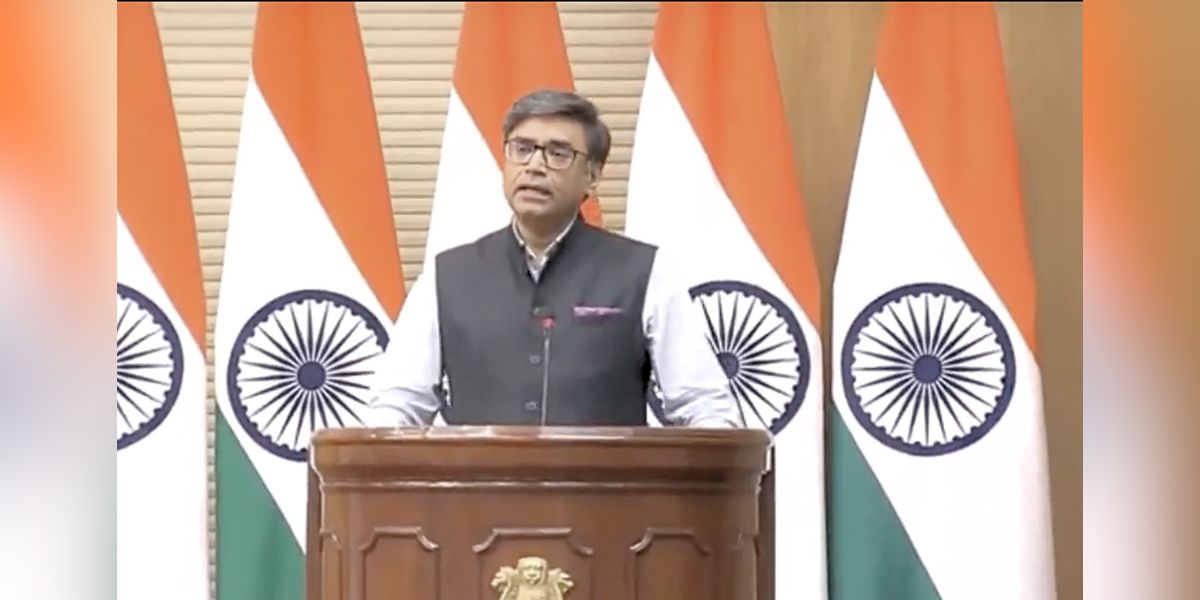Amritsar in Punjab was placed under a red alert early Sunday morning following heightened security concerns, with district authorities urging residents to remain indoors.
Published May 11, 2025 | 9:27 AM ⚊ Updated May 11, 2025 | 9:34 AM

Vikram Misri, Secretary, Ministry of External Affairs.
Synopsis: Reports indicate that the situation remains calm in parts of Jammu and Kashmir after the ceasefire agreement by India and Pakistan.
A day after intense shelling by Pakistan, reports indicate that the situation remains calm in parts of Jammu and Kashmir on Sunday, 11 May. Although Foreign Secretary Vikram Misri noted ceasefire violations by Pakistan shortly after the two nations had agreed upon it, the current situation remains calm.
No drones, firing and shelling were reported during the intervening night of Saturday and Sunday. The situation was also normal in the Poonch area after no drones, firing, and shelling were reported during the night.
However, Amritsar in Punjab was placed under a red alert early Sunday morning following heightened security concerns, with district authorities urging residents to remain indoors.
The situation remains normal in Srinagar, Uri, Udhampur and Baramulla on Sunday morning after no drones, firing, or shelling were reported overnight.
Meanwhile, Amritsar Assistant Commissioner of Police (ACP) Airport Yadwinder Singh said, “Situation is peaceful…Some rumours are being spread. But there is adequate security…It is peaceful now, there is no drone activity. People should not panic. I appeal to the media to verify the reports coming to them and then display them. It is essential to verify the false rumours being spread by people.”
Amritsar District Collector (DC) said the restrictions would be lifted soon.
“You will hear a short siren. It means we can resume our normal activities. Thank you for your kind cooperation,” Amritsar DC in a statement issued at 8.15 am on Sunday.
Chinese Foreign Minister Wang Yi spoke to India’s National Security Advisory (NSA) Ajit Doval and expressed hope that New Delhi and Islamabad would address their differences through dialogue and achieve a lasting ceasefire.
It was Jammu and Kashmir Chief Minister Omar Abdullah who reported explosions and a probable ceasefire violation by Pakistan in the region through a series of posts on social media.
Later, in a press statement, Foreign Secretary Vikram Misri said the violations constituted a “breach of the agreement made earlier today.”
Notably, he did not use the word ceasefire in his statement.
“There have been multiple violations in the past few hours of the understanding reached earlier this evening between the Directors General of Military Operations of India and Pakistan. This constitutes a breach of the agreement made earlier today. The armed forces are providing an adequate and appropriate response to these violations, and we take the motives behind them very seriously,” he said.
“We call upon Pakistan to take appropriate steps to address the violation and deal with the situation with seriousness and responsibility. The armed forces are maintaining a vigilant stance regarding the situation. They have been instructed to respond decisively to any further instances of violations along the international border as well as the Line of Control.”
The ceasefire was first announced on the evening of Saturday, 10 May by US President Donald Trump, who claimed credit for brokering peace.
“After a long night of talks mediated by the United States, I am pleased to announce that India and Pakistan have agreed to a full and immediate ceasefire,” Trump posted on Truth Social.
Minutes later, India’s Ministry of External Affairs confirmed the ceasefire without reference to US mediation. The MEA later contradicted Trump’s assertions.
“India and Pakistan have today worked out an understanding on the stoppage of firing and military action,” External Affairs Minister S Jaishankar wrote on X.
